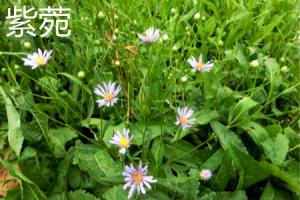What Specialized Structures in Vascular Plants Transport Water and Minerals
Vascular plants are specialized organisms that have evolved to transport water and minerals over long distances within their bodies. They accomplish this feat through a combination of specialized structures that work together to move essential nutrients from the roots to the tips of the leaves. In this article, we will explore the various mechanisms by which vascular plants transport water and minerals, and the structures that make it possible.
Xylem and Phloem
The two main types of specialized structures that transport water and minerals in vascular plants are xylem and phloem. Xylem is responsible for moving water and nutrients from the roots to the rest of the plant, while phloem transports carbohydrates and other nutrients from the leaves to the rest of the plant. Both of these systems are essential for the proper growth and functioning of vascular plants.
Xylem Structure and Function
Xylem is made up of specialized cells called tracheids and vessel elements, which are arranged in a network of pipes that run throughout the plant. These cells are long and thin, with walls that contain lignin. Lignin is a complex polymer that provides strength and support to the xylem, allowing it to withstand the pressure that builds up as water is drawn up from the roots.
The movement of water and minerals through the xylem is achieved through a combination of transpiration and capillary action. Transpiration is the process by which water evaporates from the leaves, creating a negative pressure that draws water up through the xylem. Capillary action is the phenomenon by which water is drawn up small tubes due to the forces of cohesion and adhesion.
Phloem Structure and Function
The phloem is made up of two types of specialized cells: sieve tube elements and companion cells. Sieve tube elements are long and thin, with perforated ends that allow nutrients to flow through them. Companion cells are smaller and provide support and energy for the sieve tube elements.
The movement of nutrients through the phloem is achieved through a process called translocation. This involves the active transport of nutrients from the source (usually the leaves) to the sink (usually the roots) through a combination of pressure gradients and energy from ATP. In this way, the phloem allows vascular plants to distribute nutrients to where they are most needed.
The Role of Roots in Transporting Water and Minerals
While xylem and phloem are the main specialized structures responsible for transporting water and minerals in vascular plants, the roots also play an important role. Root hairs, which are long and narrow extensions of root cells, increase the surface area of the roots, allowing for greater absorption of water and nutrients.
In addition, the roots secrete enzymes and acids that break down complex organic molecules into simpler forms that can be absorbed by the roots. This process, known as mineralization, allows vascular plants to extract essential nutrients from their environment.
Conclusion
In conclusion, vascular plants have evolved a range of specialized structures that work together to transport water and minerals from the roots to the tips of the leaves. Xylem and phloem are the main structures responsible for this task, with roots providing support and nutrient uptake. Understanding the mechanisms by which vascular plants transport water and minerals is essential for understanding their growth and survival in different environmental conditions.

 how many times do yo...
how many times do yo... how many planted tre...
how many planted tre... how many pine trees ...
how many pine trees ... how many pecan trees...
how many pecan trees... how many plants comp...
how many plants comp... how many plants can ...
how many plants can ... how many plants and ...
how many plants and ... how many pepper plan...
how many pepper plan...































